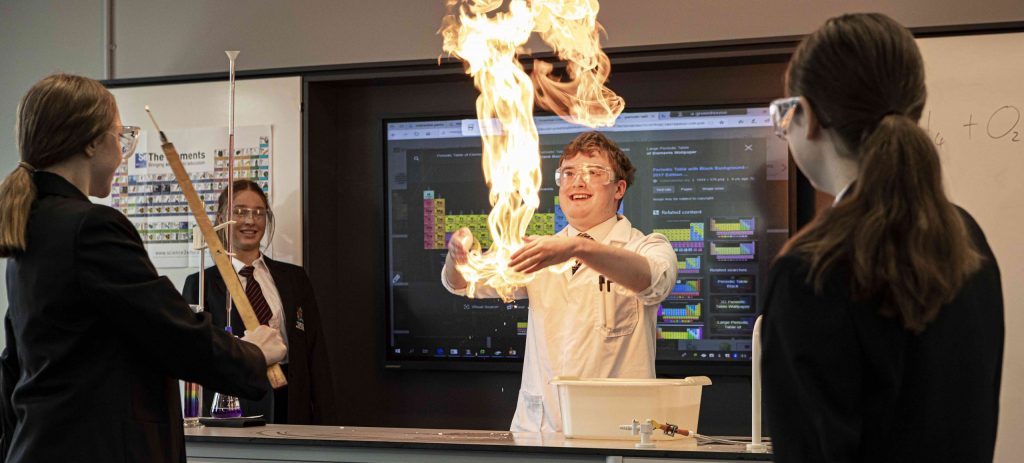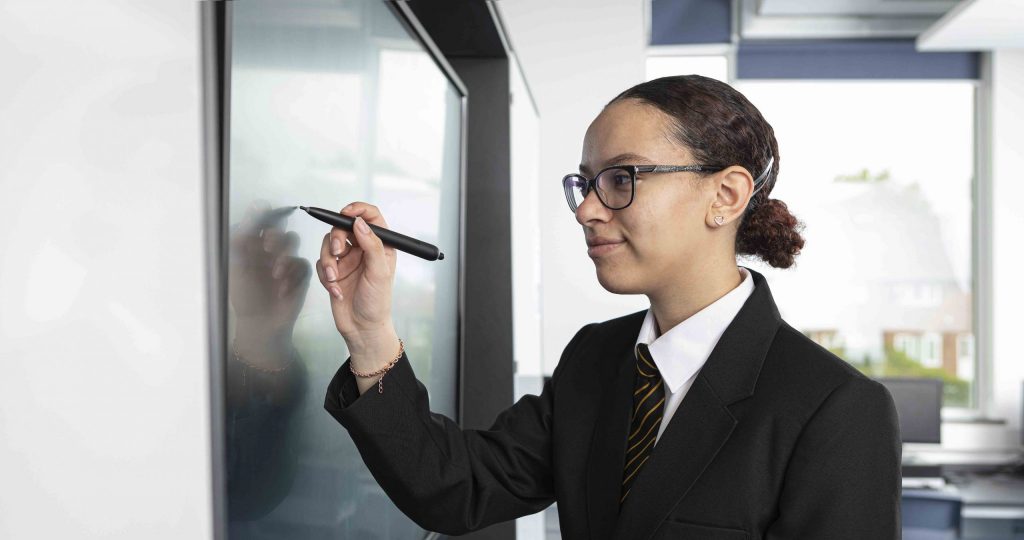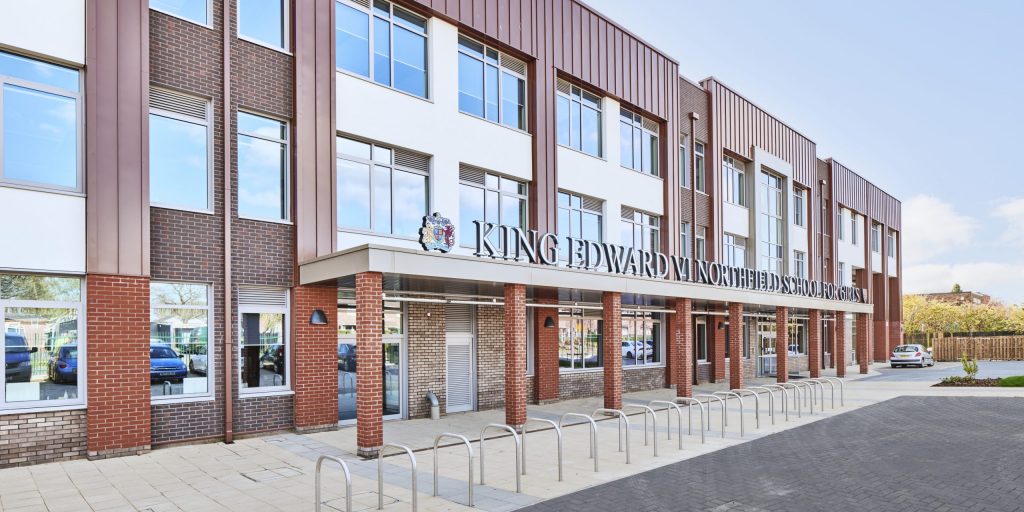There are Textiles all around us. In our everyday lives we rely on Textiles, through the fabrics we wear or the products we use. From protection; shelters (tents), coats (for different weathers), medical supplies (bandages, slings etc.), health and safety (bullet proof vests, specialist uniforms, work/school uniform), bags (work wear, function or fashion) and much much more.
Textiles at KS3
Textiles technology focuses on the knowledge and understanding of fabrics, designers, textile components and processes, whilst teaching pupils to consider sustainability and environmental impact in their designing. Pupils learn how to design, manufacture and construct their own textile items, including clothes and accessories. They also study how fabrics and textiles products manufactured; from fibres through to finished textiles. Practical skills are developed by producing a wide range of decorative techniques and learn how these are created in including the use of CAD/CAM.
Pupils also study fashion designers and the ways that textiles have influenced the way we live today in particular; environmental, ethical, social and moral issues related to the Fashion and Clothing industries.
Textiles Technology is constantly changing and is at the forefront of recent scientific innovations, as a result students learn about technical textiles, including smart, modern and electronic textiles.
The study of Textiles at KS3 contributes significantly to our fulfilment of the National Curriculum requirements for Design and Technology ensuring that all pupils develop their design, make, evaluative skills and technical knowledge throughout their technology experience.
At KS3 students develop their imagination, creativity, knowledge and understanding of the subject. Textiles is a fun subject where pupils work from a set design briefs and meet the needs and requirements of a manufacturer/situation. Within their lessons pupils explore:
- What is Textiles?
- Fibres and Fabrics
- Designers/Artists that link to Textiles
- Decoration, Construction and fastening methods
- Develop research, design and presentation skills
- Develop design ideas and annotation skills
- Develop sewing machine confidence.
- Develop hand eye coordination skills
- Develop practical skills including decoration, construction and fastening knowledge and application.
- Use numeracy skills in relation to seam allowance and sizes of fabrics
Pupils will use a range of fabrics to develop these skills and create a range of different products.
What will I make?
- Year 7 Resist Scrunchies, Collaboration clock & Monster phone case
- Year 8 Environmental impact Mors bag & Animal bags
- Year 9 Complex needs Fiddle skill mat
Textiles at KS4
GCSE Textile Design is a popular course and is offered as an option subject at KS4 for pupils interested in making textiles products and/or Fashion products. Basic sewing and designing skills are advantageous, but not compulsory (the knowledge gained from KS3 is ideal) and an interest in computer aided design would support this subject choice.
Textile Design is the creation of designs and products for woven, knitted, stitched or printed fabrics and involves an understanding of fibres, yarns and fabrics. Pupils develop skills and knowledge/understanding through the application of techniques and processes. They explore practical and relevant critical and contextual sources such as the work of historical and contemporary textile designers and the different purposes, intentions and functions of textile design as appropriate to their own work.
Pupils are able to work in one or more area of Textile Design, such as:
• Constructed textiles
• Digital textiles
• Dyed fabrics
• Printed fabrics
• Fashion design
• Installed textiles
• Soft furnishings
• Stitched and/or embellished textiles
This is a practical GCSE where pupils develop their ability to work creatively with processes and techniques such as: weaving, surface printing (block, screen or digital), pattern making, pattern cutting, embroidery (machine or hand), knitting, batik, appliqué and collage. In addition they demonstrate skills in the following:
- develop ideas through investigations informed by selecting and critically analysing sources
- apply an understanding of Textile Design practices in the creative and cultural industries to their work
- refine their ideas as work progresses through researching, selecting, constructing and presenting textile artefact(s)/product(s)/personal outcome(s)
- record their ideas, observations, insights and independent judgements, in ways that are appropriate to the Textile Design such as, printed fabric or constructed garments
- use appropriate specialist vocabulary and visual language critically as appropriate to their own creative intentions and Textile Design
- use drawing skills for different needs and purposes.
Pupils also further their knowledge and understanding of the development of Textiles Design and the rich heritage of the textiles industry within Britain by referencing the work and approaches of textile designers from contemporary and/or historical contexts, periods, societies and cultures as well as contemporary and/or historical environments, situations or issues.
Within the course, pupils produce a portfolio of practical work showing their personal response to either a school or pupil set brief, scenario or stimulus. They also have to respond to an externally, exam board set paper released in January of Year 11. This provides five themes, each with a range of written and visual starting points and stimuli. Pupils need to respond to one of these.
2-Year KS4
| Term | Yr 10 | Yr 11 |
| Autumn | Pupils develop their skills moving into Textiles (some having not completed prior). Skill development focus. Decoration module Sewing machine skills | NEA 1 |
| Spring | Focussed project: Clocks- timbers, fabric, mechanism Dogs dinner- Graphics theme 3D product | NEA 1/ plus NEA 2 prep |
| Summer | MOCK EXAM + Fashion based Commercial patterns theory & practical- Little girls dress Block pattern theory & application Jacket/ top | NEA 2 prep Exam |



